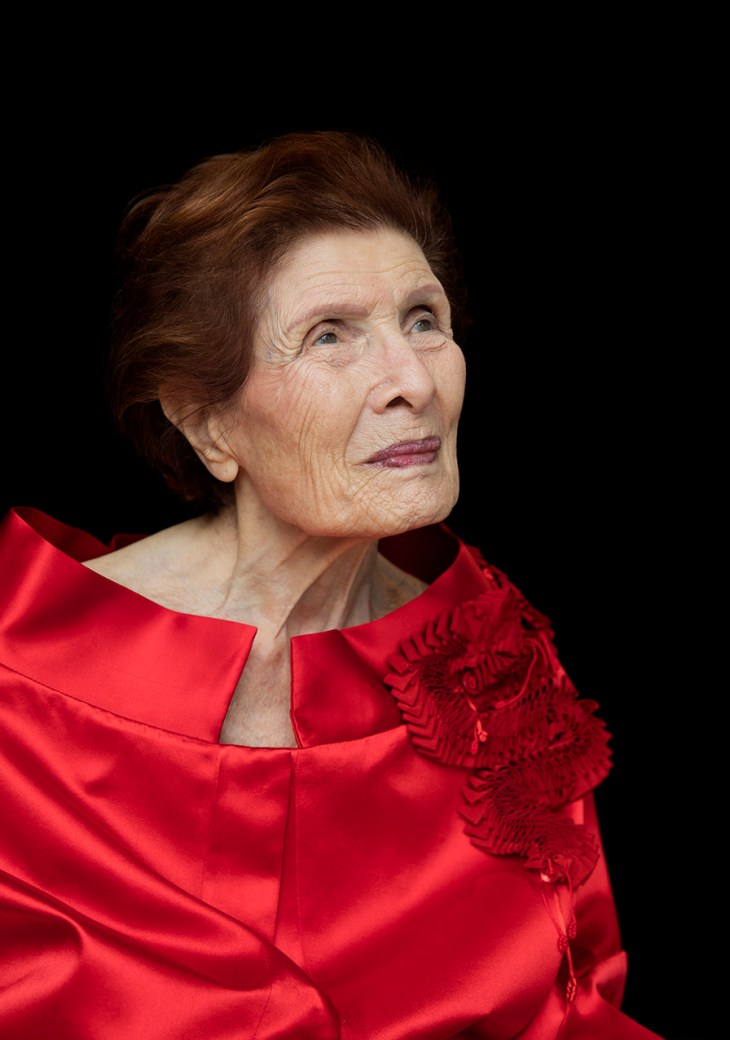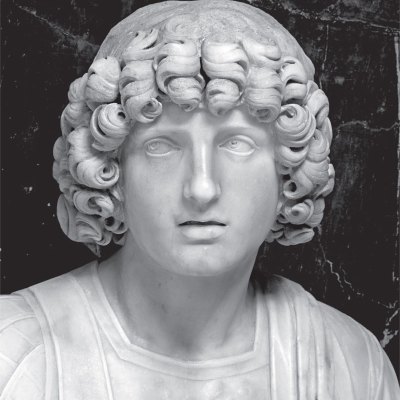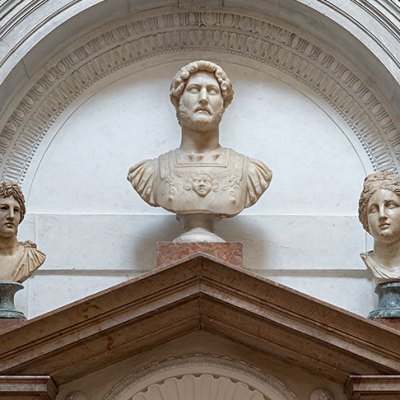The art collector Hester Diamond has died at the age of 91. In recent years, Diamond had donated Veronese’s Venus Disarming Cupid and Cornelis van Haarlem’s Paris and Oenone to the Worcester Art Museum, Massachusetts, and had co-founded VISTAS, a not-for-profit publishing project focusing on new scholarship on sculpture; she had previously helped to found the Medici Archive Project, an organisation that supports innovative archival research. In June 2011, she spoke to Susan Moore for Apollo about her love for the Old Masters and her own collection, which grew alongside her work as a modern art dealer from the 1950s onwards. The article is republished in full below.
In an increasingly prescribed and homogenised world, Hester Diamond is a one-off. A self-proclaimed ‘ideological modernist’ all her life, initially she elected to display one of the great collections of mid-century classic modern art with 18th- and early- 19th-century neoclassical furniture. She then dramatically changed direction, building a collection of mainly Renaissance painting and sculpture and, in a conscious subversion of conventional ‘good taste’, presenting it alongside 21st-century furniture.
Beneath Mrs Diamond’s self-evident warmth, humanity and generosity – none of which are givens in the company of serious collectors – is a keen intelligence that has guided her through more than 60 years of looking at, and thinking about, works of art. With her first husband, Harold Diamond (1926–82), she built one of the great private art-dealing businesses in New York, renowned for blue-chip modern art. Today, at 82, she remains an indomitable traveller, ‘running around like a maniac’, as she puts it, and making four trips to Europe to see exhibitions in the last eight months alone.
Hester Diamond (1928–2020). Portrait: Carla van de Puttelaar

Hers has been a fascinating life, and also an unlikely journey. ‘I’ve known how to follow my luck,’ she says firmly, as we sit on Marcel Wanders-designed sofas beneath Veronese’s beguiling Venus Disarming Cupid (c. 1550–55). ‘I had the incredible good fortune – though many people might not think so – of going to high school during the Second World War. It was Hunter High, next to Hunter College in Manhattan, which was taken over by the WAVES, the women’s navy. Four years of college students had to be squeezed into a building for two, and so we had to be out of our building by 1pm. So there I was: I lived in the Bronx and I was in Manhattan with every afternoon completely free. I went to all the museums.
‘It was MoMA that really got me. In those days there was no instruction in the museum – and no books. I had to look at these rather baffling pictures and figure it out for myself – why I found them so compelling, what was happening in them, why they were interesting. It was a fabulous education, because I really had to look and think. I had terrible taste then, as you might expect!’, she howls with laughter. ‘In a certain sense, I still see the early 20th century as the “Gospel According to Alfred”,’ she muses, referring to MoMA’s visionary first director, Alfred Barr. Likewise, the design of the building itself – ‘it was all about breaking symmetry’ – proved to have a profound effect on her sensibilities.
Another haunt was the Guggenheim, then a townhouse and known as the Museum of Non-Objective Art. ‘It was very, very precious’, she remembers. ‘You could recline on charcoal velvet daybeds and look at the Paris-period Kandinskys. They played tinkly music – Scarlatti – and there was never a soul in there.’ Was there ever anyone at MoMA? ‘You could fire a cannon in there!’ she laughs.
‘At 17 I started dating the man I later married. He discovered I had this bizarre habit of going to museums. It was all news to him, but he was very quick to fall in love with art the same way that I had, and so I had a companion-in-arms. Harold was a 4th-grade school teacher and I was a social worker; every Saturday we went around to all the galleries. We got married in 1950, and at that time there were a lot of dealers who let you buy things for $25 a month – we had $25 payments all over town! The huge change came when Harold became a dealer to support our habit.’
Incredibly, Harold Diamond’s nascent dealership received its first leg up after the couple got hold of a book on the British sculptor Barbara Hepworth. ‘We had never seen one [of her sculptures] in the flesh, of course, but she was obviously in the orbit of Brancusi, whom we revered, and we were shocked that we did not know about her,’ she explains. (Little did they realise back then that they would come to own the best of Brancusi’s iconic Bird in Space series.) ‘When I think of the gall we had! I wrote Barbara Hepworth a letter asking if she was interested in having a travelling exhibition in the US. I don’t know who she thought it was writing to her, but probably not a pair of penniless kids – we were 25 at the time!
‘She wrote back that she would be delighted. I got estimates for packing, shipping and a modest catalogue and sent letters to museums all over the country asking them if they were interested in a show and what the set fee would be. We got a response from some astonishingly good museums. At each venue at least one thing sold and we were able to buy a piece for ourselves.’
Hepworth was so pleased with the results of the exhibition that in 1955 she invited the couple over to St Ives. There they were introduced to everyone in the artist’s colony and beyond. Harold had his heart set on a new Burberry coat he had seen advertised in a newspaper, and so, when Ben Nicholson – Hepworth’s husband until 1951 – arranged for them to visit ‘Hodgie’ (E.H. Hodgkins), who already owned a couple of Nicholson’s paintings, he asked if he might take two more just in case she wanted to buy one. She bought both, and then asked him if he might sell the four remaining, hitherto unsaleable pieces from the estate of her father, a leading art and antiques dealer. The couple returned to New York armed with four photographs, which Harold promptly sold to Hirschl & Adler. ‘We were really unleashed [then],’ smiles Hester.
The Diamonds returned to St Ives every year during the school vacation. ‘Barbara and Ben’s friends were delightful – usually left-wing intellectuals down at their heels. They had all bought works of art mostly because the artist needed money and Ben had told them they had to. We got a lot of things to sell because we offered to pay outside the country at a time when currency restrictions were so tight that it was almost impossible to travel. One darling friend sold a Mondrian to pay for her daughter’s trip around the world.’ When, in 1959, Mr Diamond was refused leave from his school to choose a sculpture by Henry Moore – whom the couple also regularly visited – for a client, he resigned in order to deal full-time. At first, he and Hester worked at home together. (‘Even when Harold was much surer of himself, he would not put down money without consulting me,’ she recalls.) They learned a great deal, about both art and people, through dealing. ‘It was fascinating to discover how many people there are who prefer to buy the “good” rather than the “great”. I think people are scared of great things because they are too demanding and you have to pay attention to them.’ All along, from that very first Hepworth, they tried to keep the best pieces for themselves. ‘As the things we dealt in got better we had to fight harder to keep them, but some clients just had too much clout.’
One client, J. Seward Johnson, heir to the Johnson & Johnson fortune, prompted a new professional direction for Hester Diamond. Johnson had just bought an apartment for his future wife, Barbara (‘Basia’), and he asked Hester if she would decorate it. All of a sudden, she was in business as an interior designer – a business in which she would remain for the next 19 years, continuing after her husband’s death, until 1989. ‘I loved every minute of the business but one day I suddenly couldn’t wait to get out,’ she explains. Almost 60 at the time, she decided to sell a cubist Picasso in order to generate some extra income. It raised $2m more than she had anticipated. ‘At that age, the idea of money in the bank held no attraction whatsoever, so it was play-money. I couldn’t afford anything in the field of classic modern – it had gotten too expensive. I thought about what else I really liked and realised that I really liked Old Master painting and sculpture.’
By this time she had remarried, to the academic Ralph Kaminsky. His daughter, Rachel, worked in Christie’s Old Master paintings department. ‘Rachel knew the game and the players and knew who could advise me well; I asked her to introduce me around,’ says Mrs Diamond. In that first period she bought four small paintings, two Flemish and two Ferrarese. The latter pair – a Garofalo and an Ortolano – remain in the collection today, despite their owner’s merciless editing (more on which later). ‘That was it: I was hooked,’ she proclaims, flashing another smile.
Over the next 15 years, she set about selling off modern pictures in order to buy Renaissance ones. What she describes as her first ‘A’ picture was the aforementioned Veronese depicting Venus depriving her son Cupid of his fateful bow, which when she acquired it in 1990, had only recently been rediscovered. Not for the first time in the treatment of this subject have expanses of sensuous flesh been so lusciously rendered –what distinguishes this work, rather, is that the great Venetian colourist based his composition on a drawing by Parmigianino. For this a Mondrian was sold.
Venus Disarming Cupid (1550–55), Paolo Veronese. Courtesy Worcester Art Museum

In place of a Severini came one of her greatest treasures, a powerful and emotionally charged Virgin and Child of around 1518 by Jacopo da Pontormo (1494–1557), the leading and most original painter of his day in Florence. Nowadays almost none of Pontormo’s works remain in private hands. ‘She is so monumental and he is completely on the move,’ rhapsodises Mrs Diamond as we gaze up at it. ‘Every muscle is alive, and this flickering line down the back is one of the things that is making him move.’
‘One of the things that makes this such an obsession, and such a rich obsession, is that I am interested in every aspect of the paintings. I am interested in the art history, in the provenance, in condition issues, framing, and most of all in the aesthetic.’ For her, an early provenance ‘gives an extra charge’ – the inventory numbers on the back of the Pontormo, for instance, establish that it was in the collection of Cardinal Carlo de’ Medici.
Grandest of all is the provenance of two thrillingly freely painted canvases by the idiosyncratic Ferrarese artist Dosso Dossi (c. 1490–1542) which hang in the dining room. These were commissioned by no less a figure than Alfonso d’Este, Duke of Ferrara, for his magnificently decorated ‘Camerino d’Alabastro’. Recent rediscoveries first announced in Apollo in January 2000, they once formed part of a frieze of 10 canvases illustrating scenes from Virgil’s The Aeneid – perfect exemplars of Renaissance painting as the visual equivalent to poetic invention. Unlike their fellow survivors, these two are in remarkable, richly hued condition, their delicate glazes intact and the brushwork in full relief.
‘Everything I buy is strongly composed and usually involves strong colour,’ expands Mrs Diamond. ‘One of the most interesting things about the long period in which I was changing over from Modernism to the Renaissance was that there was never any difficulty about hanging them together. You always had the sense of the same sensibility at work in the choosing. Structure and colour are what they had in common.’ To which she might have added the tendency of their figures to have a powerful sculptural mass.
The vagaries of the Old Master market generally don’t allow for very specific choices, but it seems that those first purchases revealed an enduring preference for either early Flemish or 15th- and 16th-century Italian works. There are of course the odd anomalies – Cornelis van Haarlem’s Angelica and Medoro (1616), for instance, was painted at the Court of Rudolf II in Prague, while a beloved carving of Saint Anne with the Virgin and Child (‘Anna Selbdritt’) by the Master of the Schongauer Retable is South German. From the very beginning, however, one criterion was absolute: ‘It had to be love. It is the emotion that moves the artist that moves me.’
Interestingly, there are no bronzes. Where sculpture is concerned, Mrs Diamond’s preference is for terracotta, wood and marble, which have a real sense of the artist’s touch. Pieces she has acquired include a wonderful 15th-century Benedetto da Maiano terracotta angel and a primitive but expressive polychrome Flemish Hausaltar of around 1500 – ‘probably the rarest thing I own’ – which has survived more or less intact.
The sole work on paper is one of the glories of the collection: a succulent example of Federico Barocci’s revolutionary practice of making dramatic preparatory studies in oil on paper for the individual figures in his altar-pieces. This head of St Joseph was for his Visitation (1583–86) in the Chiesa Nuova in Rome, a painting before which St Philip Neri regularly prayed.
It is clear that Hester Diamond has always derived great pleasure from hanging, and re-hanging, her collection. Such frequent rearrangements are prompted in part by her constant process of upgrading: ‘Every time I make a major purchase I rank my collection. I start with an alphabetical list so that I am not influenced by my earlier judgements, as I want to see whether I still agree with myself. What you can be sure of is that the works on the bottom of the list are on their way out of the door.’ Furthermore, she explains, ‘A lot of what you do when you hang comes out of your unconscious, and there are so many connections you only recognise in new juxtapositions.’
An example of this is the present hang in the dining room, which has a totally unplanned elemental/natural theme: the fire of the Dosso Dossi; the water of Bill Viola’s Ablutions (2005); the cornucopia of fruit in Bernini’s youthful tour de force, Autumn, a highlight of the collection; the gloriously uplifting tree, Spread Forest (2010), by Xu Zhen (aka Made In China Company). She is characteristically perceptive about Viola: ‘His head is really in the Renaissance.’
A twin thread of old and new runs throughout the apartment, the roots of which lie in Mrs Diamond’s brief stint, decades ago, working in an antique shop. ‘I saw a pair of chairs that I thought would look great with our modern paintings,’ she recalls. ‘That was the beginning – I saw I got a terrific play out of the contrasts between the two.’ Slowly, all the furniture in the apartment came to be antique. ‘When I sold off the last six modern paintings in 2004, the place went dead. The Renaissance and baroque painting and sculpture and the neoclassical furniture had nothing to say to one another. It took me two years to summon up the courage to do what I thought I wanted: to bring in the 21st century. It was a big risk, but I was sure enough of the principle.’
For advice she turned to interior designer Jim Walrod, a friend of her son Michael (aka Mike D, of the famed hip hop group the Beastie Boys). He recruited Nick Dine (son of artist Jim Dine), a designer known for his modern aesthetic and strong colour sense. Much to both designers’ amazement, it was their client who was pushing them to bolder forms and more extreme colour. ‘Conventional good taste is a system of constraints, and it is so easy for a tasteful apartment to turn into just an ensemble where you don’t look at the individual works of art. I did my best to throw my good taste to the wind, although I could not get away from a certain artfulness in arrangement.’ Hester Diamond pauses, before noting: ‘The paintings came to life’. This bold dynamic ensures that no-one who has the good fortune to visit her apartment can fail to take note of its extraordinary art.


